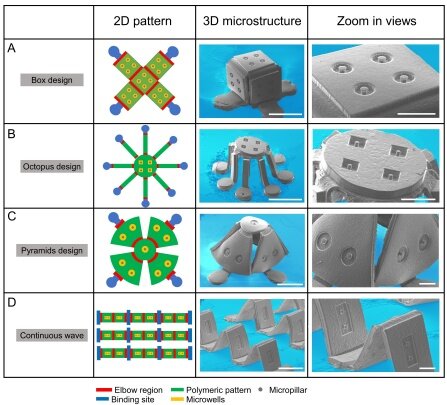A new method inspired by kid's pop-up books for making 3D artificial tissue
Date: 18.10.2021
University at Buffalo researchers have developed a new process for creating three-dimensional artificial tissue, an advancement that could improve experimental drug testing, the quality of artificial organs and more.
 The method is based upon compressive buckling – the structural engineering principle that explains why figures project outward from the pages of children's pop-up books.
The method is based upon compressive buckling – the structural engineering principle that explains why figures project outward from the pages of children's pop-up books.
In a series of experiments, researchers used the compressive buckling method to fabricate a variety of three-dimensional polymeric structures. These include simple shapes, such as a box and a pyramid, as well as more complex demonstrations, such as a sound wave and an eight-legged design that resembles an octopus.
To showcase the method's utility for tissue engineering, the team created an osteon-like structure. Osteon is the basic building unit of bone tissue and is characterized by osteocytes sparsely distributed in a mineral bone scaffold. Each osteocyte rests in a small cavity, known as lacunae, and different osteocytes are connected through canaliculi, which are small channels in the bone scaffold.
The results are important, Zhao says, because most tissue engineers rely on two-dimensional tissue fabrication methods to create very thin tissues that do not represent the volume of the human tissue. The planar nature of these tissue models limits their application in disease modeling and drug testing, he says.























